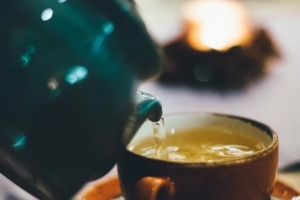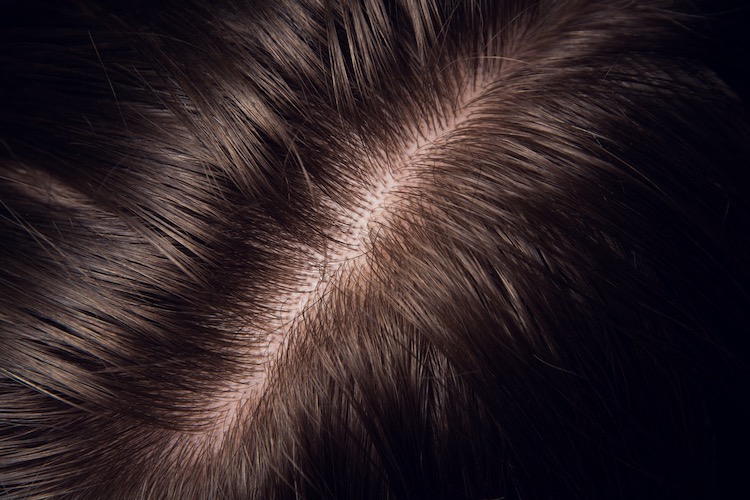Get Healthier, Fuller, Thicker Hair. Your Fall Hair Care Guide.

Long, hot summer days are about to make way for crisp fall air. It’s time to transition from bathing suits and vacations to back-to-school shopping, football season, and hayrides. Here’s something that may not be on your radar, though. The transition from warmer weather to cooler temps can affect your hair’s growth cycle. Is it time to switch up your hair care routine? Need to give your hair some extra TLC? Find out how your hair changes during the transition from summer to fall and what you can do to get healthier, fuller, thicker hair. Your fall hair care guide is here!
What Happens to Your Hair in the Fall?
Do you know how people say your hair grows faster in the summer? It’s not just an old wives’ tale. It’s true! A small sample of men was tracked for a year. During that time, researchers found that the number of hair follicles in the growth cycle peaked in March. In August and September, the least amount of hair follicles were in the growth stage. Not only that, the amount of hair shed more than doubled that of the previous winter. (01) So how can you offset the natural loss and keep your hair on top of its game? Here are some things you can do.
Moisturize
As summer’s heat and humidity are replaced by cooler air, you may find that your hair gets dry and frizzy. That means it’s time to swap your summer hair care products for more moisturizing and hydrating ones. Check the ingredients on your shampoo and conditioner bottles. You’ll want products that are sulfate-free and enriched with natural oils to keep your hair looking shiny and healthy. Fall is also the perfect time for deep conditioning treatments. Hair masks or natural oils, including coconut oil, argan oil, and olive oil bases, can help bring the shine back to damaged hair.
Keep It Cool
Sure, nothing feels better than a hot shower on a chilly day but think twice before using steamy hot water. Hot water can strip your hair’s natural oils, causing dryness and breakage. Use warm or cool water instead, especially when rinsing your hair. Cooler water helps maintain your hair’s natural moisture levels and promotes a healthier scalp. Think twice about heat styling, too. Excessive heat from hair dryers, flat irons, and curlers can lead to breakage and split ends. Consider embracing your hair’s natural texture instead. Is heat styling unavoidable? Use a heat protectant so there’s a barrier between your hair and your heat tool.
Get Regular Trims
Haircuts don’t affect your hair’s growth cycle but can help your hair’s overall health and make it look healthier. Trimming your hair every six to eight weeks can help prevent split ends from moving down the hair shaft and creating further damage. You may even have fun experimenting with a few new looks along the way.
Protect Your Hair from the Elements
Weather can be unpredictable in the fall. You never know when winds will blow through or if rain will dampen your day. Stylish hats, scarves, and hair-friendly accessories can save the day by protecting your tresses from environmental damage. Careful not to use anything tight, though. Tight ponytail holders, barrettes, and headbands can cause breakage, which is what you’re trying to avoid.
Nourish from the Inside Out
Did you know that your diet can affect your hair’s appearance? Make sure you’re eating a balanced diet with plenty of protein. Protein feeds keratin, which is your hair’s main building block. Foods like free-range eggs and poultry, fish, nuts, fruit, and leafy greens provide essential nutrients for thick, silky locks. Hair growth supplements may help if your hair is thinning or seems lackluster. Look for ingredients like biotin, collagen, and saw palmetto that help your hair grow stronger and faster.
Consider Scalp Massages
Ever had your hair washed at a salon or barber shop and gotten a bonus scalp massage? If so, you know how relaxing scalp massages can be. Even better, scalp massages may support hair health and growth too. Almost 70 percent of over 300 people who did scalp massages for 11 to 20 minutes daily for almost six months reported less hair loss or growth. (02) Researchers believe the improvement may be due to improved circulation. Not only that, massages reduce stress which can contribute to hair loss. So, why not give it a try? Simply use your fingertips to gently massage in circular motions. Free and easy to do!
Check Out the Latest Gadgets
Curious about the latest tools available to help your hair grow faster and thicker this fall? You’ve come to the right place. Let’s start with the dermaroller. Dermarollers are small, hand-held rollers with a bunch of tiny needles embedded in the roller. The needles create microscopic divots that stimulate the production of collagen and elastin. Like scalp massages, dermarollers also increase the blood supply to your hair follicles. That enlarges the follicles so new growth can emerge. The Gua Sha combs you may have seen on TikTok have a similar effect. The combs, made out of natural elements such as jade, look like other combs, but have extra thick, wide teeth. Rather than making small wounds on the scalp, Gua Sha massages the scalp to increase circulation. Want to give it a try? Use a little oil and very gently massage the oil into your scalp with the comb.
Keep Tabs On Your Hair Loss
Is your hair loss seasonal or due to a factor that needs more attention? If you’re not sure, there’s never a downside to consulting with a licensed dermatologist. You’ll get peace of mind if they don’t find anything significant. If it turns out that you’re experiencing male or female pattern baldness or another type of alopecia, the earlier you get treated, the more likely you’ll have a successful outcome. Don’t have a dermatologist on speed dial? Feeling insecure about asking questions in person? We’ve got you covered. Reach out to one of Happy Head’s board-certified dermatologists and hair specialists. We can help you discern between a typical amount of hair loss for the time of year and what’s not. If you need hair growth treatments, we can help with that too.
Fall Into Fuller, Thicker Hair
Sure, we tend to lose more hair in autumn than during other times of the year, but that doesn’t mean we can’t fight mother nature… and win. Switching up your hair care products with volumizing and moisturizing formulas, eating well, and seeking professional help if you have specific hair loss concerns are just a few of the things that you can do to keep your hair in top condition this fall. Now, pumpkin spice latte, anyone?
Want more tips and tricks for healthy hair growth and home maintenance? Follow us @hihappyhead to get the latest.
Resources:
(01) https://pubmed.ncbi.nlm.nih.gov/2003996/
(02) https://link.springer.com/article/10.1007/s13555-019-0281-6




